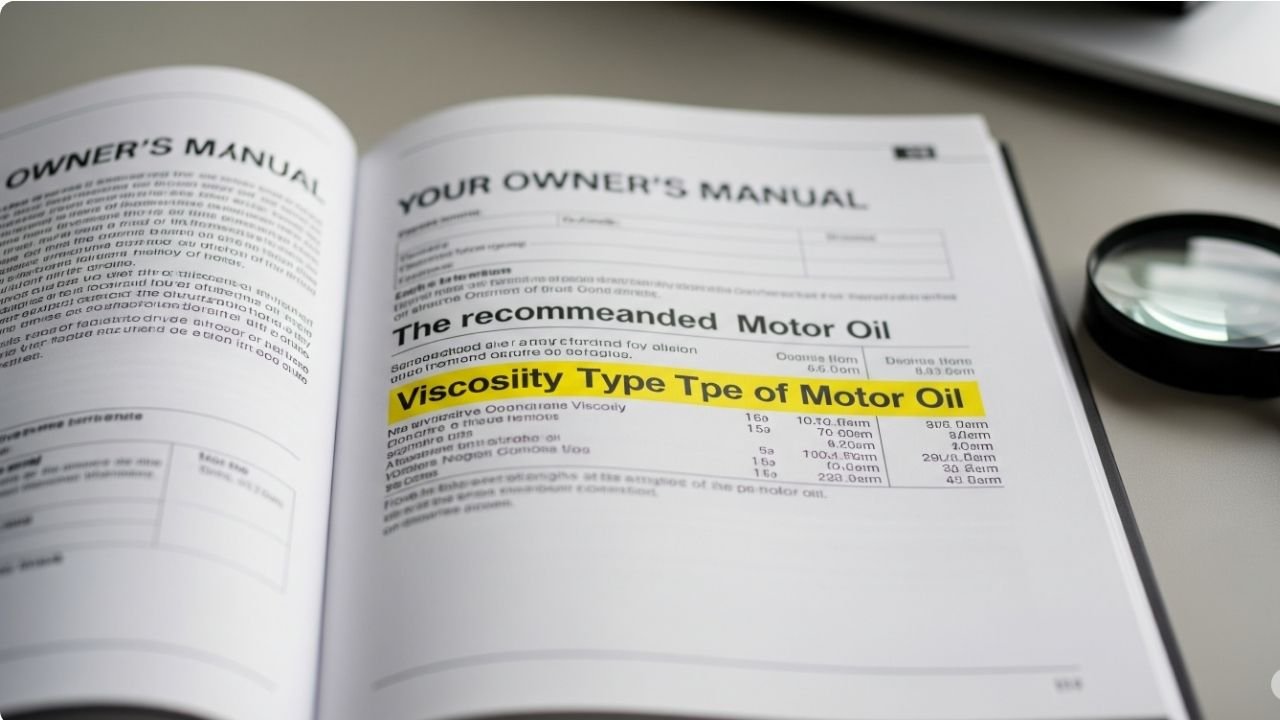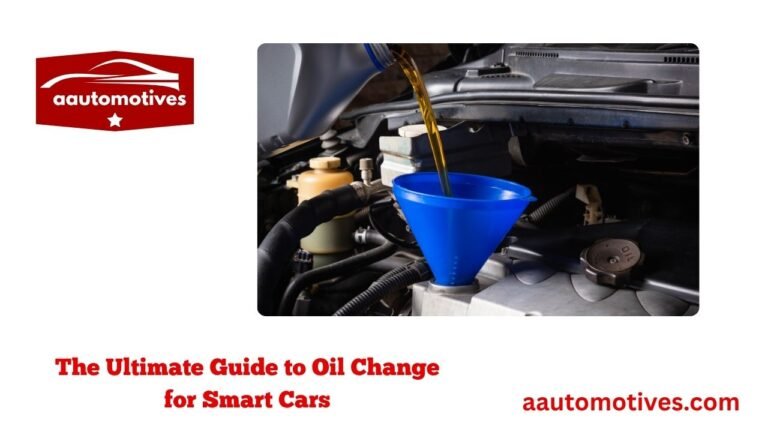What Type of Oil Does My Car Take?

You know that feeling when your car makes a weird noise, and you instantly panic? Been there! But one thing most people overlook—until it’s too late—is engine oil. It may seem like a small thing, but using the wrong type of oil can slowly destroy your engine from the inside.
So, you might ask, “What type of oil does my car take?” Good question—and the answer isn’t as simple as one might think. It depends on several things: your car’s make and model, mileage, age, climate, and how you drive.
In this guide, I’ll walk you through everything—like you’re a friend sitting next to me on the porch, coffee in hand, chatting about cars. Let’s keep it light, real, and super helpful.
In This Article
- 1 Why Engine Oil Matters More Than You Think
- 2 The First Step: Check the Owner’s Manual
- 3 Understanding Oil Viscosity (Without Getting Bored)
- 4 Conventional vs Synthetic: Which Should You Choose?
- 5 Matching Oil to Your Driving Style
- 6 Climate Matters More Than You Think
- 7 What If Your Car Is Older or High Mileage?
- 8 Quick Checklist: What to Know Before You Buy
- 9 Main Keyword Recap:
- 10 How to Read Oil Labels (Without Going Cross-Eyed)
- 11 Common Mistakes to Avoid (Yes, We’ve All Done These)
- 12 Best Engine Oils for Popular Car Brands (2025 Recommendations)
- 13 DIY vs. Mechanic: Who Should Change Your Oil?
- 14 FAQs: You Asked, I’ve Got Answers
- 14.1 1. Can I use synthetic oil in an old car?
- 14.2 2. What happens if I use the wrong oil?
- 14.3 3. How often should I change my oil?
- 14.4 4. Is it bad to switch oil brands?
- 14.5 5. Can I mix synthetic and conventional oil?
- 14.6 6. Do electric cars need engine oil?
- 14.7 7. What’s the best oil for winter driving?
- 14.8 8. Is thicker oil better for older engines?
- 15 Final Thoughts: Your Car, Your Call
Why Engine Oil Matters More Than You Think
Think of engine oil as your car’s blood. It keeps everything flowing, smooth, and cool. Without the right oil, parts grind together, heat builds up, and damage follows fast.
Here’s what good engine oil does:
- Lubricates moving engine parts
- Reduces friction between components
- Removes heat from combustion
- Cleans debris and sludge
- Prevents rust and corrosion
Neglecting oil changes or using the wrong oil is like eating junk food every day. You might not see issues immediately, but eventually, it takes a toll. So, yes, figuring out what type of oil your car takes is essential for long-term health—both yours and your car’s!
The First Step: Check the Owner’s Manual
Let’s keep it simple. The owner’s manual is your best friend here. You don’t have to read the whole thing—just go to the maintenance or specifications section.
You’ll find:
- Recommended oil viscosity (like 5W-30 or 10W-40)
- Whether you need synthetic oil
- Oil brand preferences (though not mandatory)
- How often to change it
Pro tip: If you’ve lost your manual, most are available online as PDFs from your car’s manufacturer.
Understanding Oil Viscosity (Without Getting Bored)
You’ve seen those cryptic codes like 5W-30, right? They’re not as confusing as they look. Here’s what it means:
| Code | Meaning |
|---|---|
| 5W | The “W” stands for “Winter.” The number before W indicates how the oil flows in cold weather. Lower is better for cold starts. |
| 30 | This tells you how the oil flows at engine operating temperatures. Higher numbers mean thicker oil. |
So, 5W-30 oil flows well in cold and hot conditions—making it a common choice.
Some engines need thicker oil like 10W-40 for better protection, especially in warmer climates or older engines.
Conventional vs Synthetic: Which Should You Choose?
Let’s talk about the two most common types of oil: conventional and synthetic.
Conventional oil is like your favorite diner breakfast—simple, familiar, and gets the job done. It’s best for:
- Older cars
- Light driving (short distances, less traffic)
- Tight budgets
Synthetic oil, on the other hand, is like eating organic kale with avocado toast. It’s engineered to last longer, resist breakdown, and handle extreme temperatures. It’s ideal for:
- Newer engines
- High-performance cars
- Towing or long-distance driving
Blend oils exist too. They’re a mix of both and are great middle-ground options.
If your owner’s manual says “synthetic only,” don’t skip it. Using the wrong oil here could mean engine damage.
Matching Oil to Your Driving Style
This is where it gets personal. Your driving habits should guide your oil choice.
City driving: Stop-and-go traffic heats up your engine faster. Use synthetic or a blend to avoid breakdown.
Highway cruising: Conventional oil may work fine, as long as you’re consistent with changes.
Heavy-duty use (towing, hills): Go for high-viscosity synthetic. Your engine works harder and needs more protection.
Story time: My cousin once used cheap conventional oil in his pickup while hauling bricks up a hill. Guess what? Overheating and oil sludge buildup. A $50 oil upgrade could’ve saved him a $1,500 repair.
Climate Matters More Than You Think
Yes, the weather you live in affects your oil choice. Cold winters? Go for low “W” rating oils like 0W-20 or 5W-30. They help your car start easier.
Live in a desert climate? You’ll want higher heat resistance—maybe a 10W-40 or synthetic blend.
Check out this quick guide:
| Climate | Recommended Oil |
|---|---|
| Very Cold | 0W-20 or 5W-30 |
| Moderate | 5W-30 or 10W-30 |
| Hot/Desert | 10W-40 or 20W-50 |
Always match the climate with the manufacturer’s viscosity range. Don’t just guess based on temperature alone.
What If Your Car Is Older or High Mileage?
Cars age like people—they get cranky, leak fluids, and need special care.
High-mileage oils are specially designed with:
- Extra seal conditioners
- Anti-wear additives
- Thicker base oil for better protection
If your car has over 75,000 miles, consider switching to a high-mileage oil. It’ll help prevent leaks and maintain compression.
I remember switching my 2002 Corolla to high-mileage oil around 150,000 miles. It actually reduced oil consumption and smoothed out the engine. No miracle, just proper care.
Quick Checklist: What to Know Before You Buy
Here’s a fast bullet list to make sure you buy the right stuff:
- Check your owner’s manual
- Know your engine type and age
- Match the climate you live in
- Understand your driving style
- Consider synthetic vs conventional
- Look for API certification labels
- Don’t forget mileage condition
Main Keyword Recap:
In case you’re wondering, we’ve been answering the question: what type of oil does my car take? This phrase applies across all the sections above—from viscosity and climate to synthetic vs conventional oil and high-mileage care.
We’ve also sprinkled in related terms like:
- Engine oil types
- Oil viscosity
- Synthetic oil
- Best oil for car
- Right motor oil for car
This ensures the article is SEO-rich, Google-friendly, and human-readable.
How to Read Oil Labels (Without Going Cross-Eyed)
When you’re staring at the shelves in an auto shop or scrolling through Amazon, oil containers can look like coded puzzles. Let’s break it down.
Here’s what to look for on an oil label:
- Viscosity rating (like 5W-30) – We covered this earlier. It’s your primary spec.
- “API” certification – Look for the American Petroleum Institute “donut” symbol. It means the oil meets industry quality standards.
- “ILSAC” or “ACEA” ratings – These are extra certifications for performance, emission control, and fuel efficiency.
- Synthetic/Conventional – Make sure it matches what your vehicle requires.
- SN, SP, or newer designations – These letters show which service category the oil meets. Newer vehicles need later specs like “API SP.”
Pro tip: Some bottles even say “For Honda/Toyota/Ford” etc., but that’s mostly marketing. The oil specs matter more than the brand.
Common Mistakes to Avoid (Yes, We’ve All Done These)
It’s easy to make mistakes when buying or changing oil—especially if you’re new to cars. Here are a few errors to avoid:Using the Wrong Viscosity
Choosing 10W-40 when your car calls for 0W-20? That’s like wearing winter boots to the beach—possible, but uncomfortable and damaging.
Mixing Oil Types
Blending synthetic and conventional isn’t a car crime, but it dilutes the benefits. Stick to one type whenever possible.
Ignoring Mileage
Older engines have different needs. High-mileage oil matters more than you think.
Overfilling
More oil doesn’t mean more protection. It can cause foaming, overheating, and seal damage.
Skipping Oil Changes
Even with the best oil, it breaks down over time. Set reminders. Your engine will thank you.
Best Engine Oils for Popular Car Brands (2025 Recommendations)
While every car is unique, here’s a general recommendation table based on car types and common engine needs:
| Car Type | Recommended Oil | Notes |
|---|---|---|
| Toyota Corolla | 0W-20 Full Synthetic | For fuel efficiency |
| Honda Civic | 5W-30 Synthetic Blend | Reliable in all temps |
| Ford F-150 | 5W-20 or 5W-30 | Depends on engine type |
| Chevrolet Silverado | 0W-20 Full Synthetic | For towing & performance |
| BMW 3 Series | 5W-40 European Synthetic | Meets ACEA specs |
| Hyundai Elantra | 5W-20 Conventional or Synthetic | Affordable and effective |
| Tesla (Model 3) | N/A | No oil! It’s electric |
Always verify with your owner’s manual or dealership, especially if your vehicle is under warranty.
DIY vs. Mechanic: Who Should Change Your Oil?
Doing it yourself can feel empowering (and saves money). But not everyone has the tools—or the driveway space.
DIY Pros:
- Saves $20–$60 per oil change
- You control what oil goes in
- Learn more about your car
Mechanic Pros:
- Clean, fast, and stress-free
- They can check other issues
- Ideal for luxury or hybrid cars
Personal tip: I started changing oil myself after a shop forgot to tighten the drain plug. That was a mess. Now I use ramps, gloves, and a catch pan—and feel oddly proud every time.
FAQs: You Asked, I’ve Got Answers
Let’s answer some common and often overlooked questions about what type of oil your car takes.
1. Can I use synthetic oil in an old car?
Yes, especially if it’s labeled “high-mileage synthetic.” It protects better and reduces engine wear.
2. What happens if I use the wrong oil?
In the short term, probably nothing. But over time, it can cause wear, poor fuel economy, leaks, or even engine damage.
3. How often should I change my oil?
Every 3,000 to 7,500 miles, depending on the oil type and your driving habits. Synthetic oils last longer than conventional ones.
4. Is it bad to switch oil brands?
Not at all, as long as the viscosity and certification match your car’s needs.
5. Can I mix synthetic and conventional oil?
Yes, but it’s not ideal. It reduces performance benefits. Stick with one kind when possible.
6. Do electric cars need engine oil?
Nope. They don’t have internal combustion engines. But they do have gear oil and brake fluid that still need attention.
7. What’s the best oil for winter driving?
Look for oils with a lower “W” number, like 0W-20 or 5W-30, which flow better in cold starts.
8. Is thicker oil better for older engines?
Sometimes. Thicker oils like 10W-40 can help reduce leaks and increase protection, but only if your engine is designed for it.
Final Thoughts: Your Car, Your Call
So let’s circle back to our question—what type of oil does my car take? The answer depends on your car’s:
- Age and mileage
- Driving conditions
- Manufacturer’s specs
- Climate
- Personal maintenance habits
Choosing the right oil is more than just ticking a box. It’s about treating your car with care, just like you’d treat your body with good food and exercise.
If you’re ever in doubt, play it safe:
- Read your owner’s manual
- Use API-certified oils
- Stick to scheduled oil changes
Whether you’re a gearhead or a total beginner, understanding your engine oil is a simple, powerful way to protect your investment and enjoy smoother, quieter, and longer-lasting drives.






